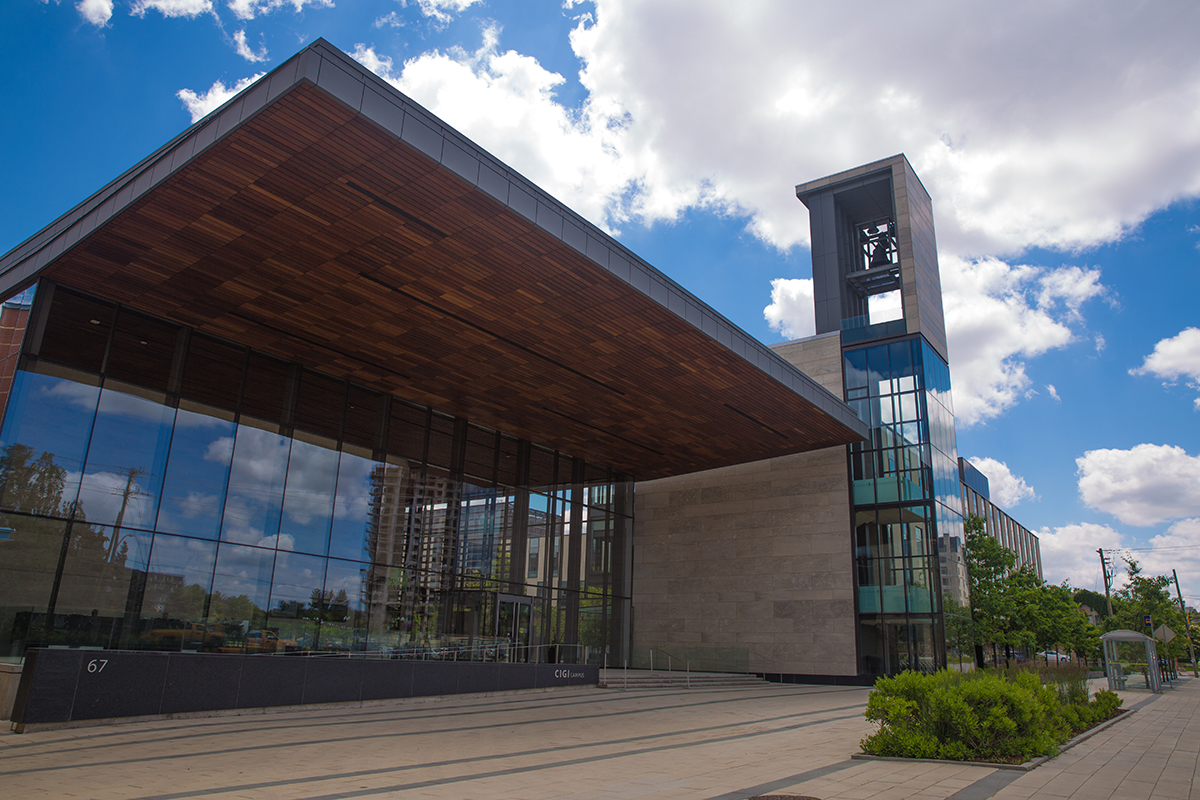|
Industrial Organization
In economics, industrial organization is a field that builds on the theory of the firm by examining the structure of (and, therefore, the boundaries between) firms and markets. Industrial organization adds real-world complications to the perfectly competitive model, complications such as transaction costs, limited information, and barriers to entry of new firms that may be associated with imperfect competition. It analyzes determinants of firm and market organization and behavior on a continuum between competition and monopoly, including from government actions. There are different approaches to the subject. One approach is descriptive in providing an overview of industrial organization, such as measures of competition and the size- concentration of firms in an industry. A second approach uses microeconomic models to explain internal firm organization and market strategy, which includes internal research and development along with issues of internal reorganization and rene ... [...More Info...] [...Related Items...] OR: [Wikipedia] [Google] [Baidu] |
Economics
Economics () is a behavioral science that studies the Production (economics), production, distribution (economics), distribution, and Consumption (economics), consumption of goods and services. Economics focuses on the behaviour and interactions of Agent (economics), economic agents and how economy, economies work. Microeconomics analyses what is viewed as basic elements within economy, economies, including individual agents and market (economics), markets, their interactions, and the outcomes of interactions. Individual agents may include, for example, households, firms, buyers, and sellers. Macroeconomics analyses economies as systems where production, distribution, consumption, savings, and Expenditure, investment expenditure interact; and the factors of production affecting them, such as: Labour (human activity), labour, Capital (economics), capital, Land (economics), land, and Entrepreneurship, enterprise, inflation, economic growth, and public policies that impact gloss ... [...More Info...] [...Related Items...] OR: [Wikipedia] [Google] [Baidu] |
Concentration Ratio
In economics, concentration ratios are used to quantify market concentration and are based on companies' market shares in a given industry. A concentration ratio (CR) is the sum of the percentage market shares of (a pre-specified number of) the largest firms in an industry. An ''n''-firm concentration ratio is a common measure of market structure and shows the combined market share of the ''n'' largest firms in the market. For example, if ''n'' = 5, ''CR''5 defines the combined market share of the five largest firms in an industry. Calculation The concentration ratio is calculated as follows: \text_n = C_1 + C_2 + \cdots + C_n = \sum\limits_^n C_i where C_i defines the market share of the ith largest firm in an industry as a percentage of total industry market share, and n defines the number of firms included in the concentration ratio calculation. The \text_4 and \text_8 concentration ratios are commonly used. Concentration ratios show the extent of largest firms' mar ... [...More Info...] [...Related Items...] OR: [Wikipedia] [Google] [Baidu] |
Richard Schmalensee
Richard Lee "Dick" Schmalensee (born 1944) is the Howard W. Johnson Professor of Management, emeritus at the MIT Sloan School of Management. He is also Professor of Economics, emeritus, at the Department of Economics at MIT. He served as the John C Head III Dean of the MIT Sloan School of Management from 1998 through 2007. He was a member of the President's Council of Economic Advisers from 1989 through 1991 and served 12 years as Director of the MIT Center for Energy and Environmental Policy Research. Schmalensee received his S.B. and Ph.D. in Economics Economics () is a behavioral science that studies the Production (economics), production, distribution (economics), distribution, and Consumption (economics), consumption of goods and services. Economics focuses on the behaviour and interac ... from MIT. Bibliography * * References External linksMIT faculty directory listing* 1944 births MIT School of Humanities, Arts, and Social Sciences alumni Living peo ... [...More Info...] [...Related Items...] OR: [Wikipedia] [Google] [Baidu] |
George J
George may refer to: Names * George (given name) * George (surname) People * George (singer), American-Canadian singer George Nozuka, known by the mononym George * George Papagheorghe, also known as Jorge / GEØRGE * George, stage name of Giorgio Moroder * George, son of Andrew I of Hungary Places South Africa * George, South Africa, a city ** George Airport United States * George, Iowa, a city * George, Missouri, a ghost town * George, Washington, a city * George County, Mississippi * George Air Force Base, a former U.S. Air Force base located in California Computing * George (algebraic compiler) also known as 'Laning and Zierler system', an algebraic compiler by Laning and Zierler in 1952 * GEORGE (computer), early computer built by Argonne National Laboratory in 1957 * GEORGE (operating system), a range of operating systems (George 1–4) for the ICT 1900 range of computers in the 1960s * GEORGE (programming language), an autocode system invented by Charles L ... [...More Info...] [...Related Items...] OR: [Wikipedia] [Google] [Baidu] |
Avinash K
Avinash may refer to: Arts and entertainment * ''Avinash'' (film), a 1986 Indian Hindi-language film * Tiger (YRF Spy Universe) (Avinash Singh Rathore), fictional agent in the ''Tiger'' franchise of the YRF Spy Universe People * Avinash Sachdev (born 1986), Indian actor * Avinash Singh (norn 1989), Trinidad and Tobago politician * Avinash Tiwary (born 1991), Indian actor * Avinash Yelandur (born 1959), Indian actor {{disambiguation, given name ... [...More Info...] [...Related Items...] OR: [Wikipedia] [Google] [Baidu] |
Infrastructure
Infrastructure is the set of facilities and systems that serve a country, city, or other area, and encompasses the services and facilities necessary for its economy, households and firms to function. Infrastructure is composed of public and private physical structures such as roads, railways, bridges, airports, public transit systems, tunnels, water supply, sewers, electrical grids, and telecommunications (including Internet connectivity and broadband access). In general, infrastructure has been defined as "the physical components of interrelated systems providing commodities and services essential to enable, sustain, or enhance societal living conditions" and maintain the surrounding environment. Especially in light of the massive societal transformations needed to mitigate and adapt to climate change, contemporary infrastructure conversations frequently focus on sustainable development and green infrastructure. Acknowledging this importance, the international co ... [...More Info...] [...Related Items...] OR: [Wikipedia] [Google] [Baidu] |
International Encyclopedia Of The Social & Behavioral Sciences
The ''International Encyclopedia of the Social & Behavioral Sciences'', originally edited by Neil J. Smelser and Paul B. Baltes, is a 26-volume work published by Elsevier. It has some 4,000 signed articles (commissioned by around 50 subject editors), and includes 150 biographical entries, 122,400 entries, and an extensive hierarchical subject index. It is also available in online editions. ''Contemporary Psychology'' described the work as "the largest corpus of knowledge about the social and behavioral sciences in existence." It was first published in 2001, with a 2nd edition published in 2015. The second edition is edited by James D. Wright. Subject Classification Contents include the following broad Subject Classification. Overarching Topics: Institutions and infrastructure, History of the social sciences and the behavioral sciences, Ethics of research and applications, Biographies, Integrative concepts and issues Methodology: Statistics, Mathematics and computer sciences ... [...More Info...] [...Related Items...] OR: [Wikipedia] [Google] [Baidu] |
Richard A
Richard is a male given name. It originates, via Old French, from compound of the words descending from Proto-Germanic language">Proto-Germanic ''*rīk-'' 'ruler, leader, king' and ''*hardu-'' 'strong, brave, hardy', and it therefore means 'strong in rule'. Nicknames include " Richie", " Dick", " Dickon", " Dickie", " Rich", " Rick", "Rico (name), Rico", " Ricky", and more. Richard is a common English (the name was introduced into England by the Normans), German and French male name. It's also used in many more languages, particularly Germanic, such as Norwegian, Danish, Swedish, Icelandic, and Dutch, as well as other languages including Irish, Scottish, Welsh and Finnish. Richard is cognate with variants of the name in other European languages, such as the Swedish "Rickard", the Portuguese and Spanish "Ricardo" and the Italian "Riccardo" (see comprehensive variant list below). People named Richard Multiple people with the same name * Richard Andersen (other) * ... [...More Info...] [...Related Items...] OR: [Wikipedia] [Google] [Baidu] |
Antitrust Law
Competition law is the field of law that promotes or seeks to maintain market competition by regulating anti-competitive conduct by companies. Competition law is implemented through public and private enforcement. It is also known as antitrust law (or just antitrust), anti-monopoly law, and trade practices law; the act of pushing for antitrust measures or attacking monopolistic companies (known as trusts) is commonly known as trust busting. The history of competition law reaches back to the Roman Empire. The business practices of market traders, guilds and governments have always been subject to scrutiny, and sometimes severe sanctions. Since the 20th century, competition law has become global. The two largest and most influential systems of competition regulation are United States antitrust law and European Union competition law. National and regional competition authorities across the world have formed international support and enforcement networks. Modern competition law ... [...More Info...] [...Related Items...] OR: [Wikipedia] [Google] [Baidu] |
Economic Regulation
Regulatory economics is the application of law by government or regulatory agencies for various economics-related purposes, including remedying market failure, protecting the environment and economic management. Regulation Regulation is generally defined as legislation imposed by a government on individuals and private sector firms in order to regulate and modify economic behaviors. Conflict can occur between public services and commercial procedures (e.g. maximizing profit), the interests of the people using these services (see market failure), and also the interests of those not directly involved in transactions ( externalities). Most governments, therefore, have some form of control or regulation to manage these possible conflicts. The ideal goal of economic regulation is to ensure the delivery of a safe and appropriate service, while not discouraging the effective functioning and development of businesses. For example, in most countries, regulation controls the sale and co ... [...More Info...] [...Related Items...] OR: [Wikipedia] [Google] [Baidu] |
Public Policy
Public policy is an institutionalized proposal or a Group decision-making, decided set of elements like laws, regulations, guidelines, and actions to Problem solving, solve or address relevant and problematic social issues, guided by a conception and often implemented by programs. These policies govern and include various aspects of life such as education, health care, employment, finance, economics, transportation, and all over elements of society. The implementation of public policy is known as public administration. Public policy can be considered the sum of a government's direct and indirect activities and has been conceptualized in a variety of ways. They are created and/or enacted on behalf of the public, typically by a government. Sometimes they are made by Non-state actors or are made in Co-production (public services), co-production with communities or citizens, which can include potential experts, scientists, engineers and stakeholders or scientific data, or sometimes u ... [...More Info...] [...Related Items...] OR: [Wikipedia] [Google] [Baidu] |
MIT Press
The MIT Press is the university press of the Massachusetts Institute of Technology (MIT), a private research university in Cambridge, Massachusetts. The MIT Press publishes a number of academic journals and has been a pioneer in the Open Access movement in academic publishing. History MIT Press traces its origins back to 1926 when MIT published a lecture series entitled ''Problems of Atomic Dynamics'' given by the visiting German physicist and later Nobel Prize winner, Max Born. In 1932, MIT's publishing operations were first formally instituted by the creation of an imprint called Technology Press. This imprint was founded by James R. Killian, Jr., at the time editor of MIT's alumni magazine and later to become MIT president. Technology Press published eight titles independently, then in 1937 entered into an arrangement with John Wiley & Sons in which Wiley took over marketing and editorial responsibilities. In 1961, the centennial of MIT's founding charter, the ... [...More Info...] [...Related Items...] OR: [Wikipedia] [Google] [Baidu] |



